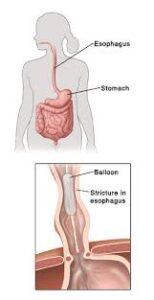Introduction
Imagine living with a constant discomfort that makes even simple daily activities a struggle. For many individuals, this is the reality of living with urethral or esophageal strictures. These conditions cause narrowing in the urethra or esophagus, leading to painful and frustrating symptoms. But there’s hope. Urethral Stricture Dilation Treatment and Esophageal Stricture Dilation Procedure offer effective relief, transforming pain into comfort and restoring quality of life. In this article, we’ll explore these treatments, how they work, and their benefits.
What is a Stricture?
A stricture is like a narrow section in a hose, restricting the flow through it. In medical terms, it refers to an abnormal narrowing of a bodily passage. When this narrowing happens in the urethra or esophagus, it can significantly impact one’s health and well-being.

Understanding Urethral Strictures
Urethral strictures are narrowings of the urethra, the tube that carries urine from the bladder out of the body. This condition can result from injuries, infections, or medical procedures and often leads to difficulty urinating and discomfort.
Understanding Esophageal Strictures
Esophageal strictures occur when the esophagus, the tube that connects the throat to the stomach, becomes narrowed. This can be caused by acid reflux, radiation therapy, or ingestion of harmful substances, leading to swallowing difficulties and pain.
Symptoms of Urethral Strictures
– Difficulty Urinating: A slow stream or frequent need to urinate.
– Pain: Discomfort or burning sensation during urination.
– Urinary Tract Infections (UTIs): Recurring UTIs due to urine retention.
Symptoms of Esophageal Strictures
– Swallowing Difficulties: Trouble swallowing food or liquids.
– Pain: Discomfort or pain while swallowing.
– Regurgitation: Food coming back up after swallowing.
Diagnosing Urethral and Esophageal Strictures
Diagnosing these conditions involves a medical history review, physical examination, and specialized tests like urethroscopy for urethral strictures and endoscopy for esophageal strictures. Imaging tests like X-rays or MRIs may also be used to get a clearer picture of the narrowing.
Overview of Urethral Stricture Dilation Treatment
Urethral Stricture Dilation Treatment involves gently stretching the narrowed area of the urethra. This procedure can be performed using special tools inserted through the urethra to widen the stricture, improving urine flow and reducing symptoms.
Overview of Esophageal Stricture Dilation Procedure
Esophageal Stricture Dilation Procedure similarly involves widening the narrowed section of the esophagus. This is typically done using an endoscope and special dilating balloons or bougies, which are inserted to stretch the esophageal walls.
The Dilation Procedure Explained
Preparation
Before the procedure, patients are typically given a sedative to relax. Local or general anesthesia may be used to minimize discomfort.
The Process
During Urethral Stricture Dilation, a thin tube called a dilator is gradually inserted into the urethra to stretch the stricture. For Esophageal Stricture Dilation, an endoscope guides the dilating tool to the narrowed area, where it gently stretches the esophagus.
Post-Procedure
Patients are usually monitored for a short period before going home. Instructions for post-procedure care, including managing discomfort and signs of complications, are provided.
Benefits of Stricture Dilation
Improved Function: Restores normal urination or swallowing. This means patients can return to their daily routines without the constant pain or inconvenience caused by the stricture.
Quick Relief: Provides fast symptom relief. Often, patients experience improvement almost immediately after the procedure, which can be life-changing for those who have been suffering for a long time.
Minimally Invasive: Less invasive compared to surgical options. This means fewer risks, less pain, and a quicker recovery period.
Outpatient Procedure: Often done without an overnight hospital stay. This makes the process more convenient and less intimidating for patients.
Risks and Considerations
While stricture dilations generally safe, there are risks, including bleeding, infection, or a temporary increase in symptoms. It’s important to discuss these with a healthcare provider to weigh the benefits and risks. Knowing what to expect can help patients make an informed decision.
Post-Procedure Care
After dilation, patients should follow care instructions carefully. This might include drinking plenty of fluids, taking prescribed medications, and avoiding strenuous activities. Regular follow-up appointments are essential to monitor progress and prevent recurrence.
Comparing Dilation to Other Treatments
Other treatments for strictures include surgical options like urethroplasty or esophageal surgery. While surgery can be more definitive, it is also more invasive, involves longer recovery times, and carries higher risks. **Dilation** is often preferred for its simplicity and quick recovery.
Conclusion
Urethral Stricture Dilation Treatment and Esophageal Stricture Dilation Procedure offer effective solutions for those suffering from strictures. These minimally invasive procedures provide quick relief, improve quality of life, and have high success rates. If you or someone you know is struggling with these conditions, discussing dilation options with a healthcare provider could be the first step toward a pain-free life.
